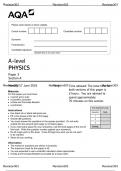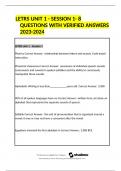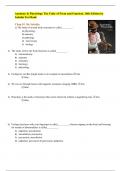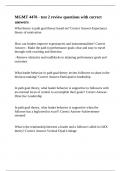Name
Course
Instructor
Date
Nitrate Contaminant in Water
Nitrate is a regulated water contaminant in the United States. It is very common in the rural areas
and causes “blue baby” disease (Methemoglobinemia) when it is over concentrated in water. It is
an inorganic compound found in the environment due to both natural and unnatural. Its major
components include Nitrogen and three parts oxygen. The major sources of nitrate contamination
in water include, but not limited to farming fertilizer which gets washed away from the soil to
ground water sources, human sewerage and livestock manure. Its maximum contamination level
(MCL) is 10.0 mg/l with a maximum contaminant level goal (MCLG) of 11.3 mg/l according to
water quality association. MCL is the highest level of contaminant allowed in drinking water
while MLCG is the margin of safety within which contamination by a particular agent bares no
health risks, i.e. when a certain level of contamination by say nitrate does not lead to any health
risks. To keep the public safe the MLCs are set extremely close to the MCLGs as possible of
course considering cost, available technology, and treatment.
In Flagstaff, the lowest levels detected 0.14 MCL in 2012 and a high of 1.5 in the same
year. The biggest contributor to these levels of contamination was attributed to fertilizer, mostly
carried off to ground water by soil erosion. In Phoenix, the highest recorded MCL for nitrate
contaminate was also within the same range. In Phoenix the primary source of water was shallow
, Surname 2
wells until the late 1931 when it was replaced by Verde river due to poor tasting condition. The
water is stored in several deep wells and treated in water treatment plants within the city. In
Flagstaff, the source of water is mainly ground springs, deep wells, and a lake that is refilled by
melting snow in the surrounding mountains as well as rain. Lake Mary and a string of over ten
wells spread across the town. According to the Flagstaff consumer confidence report of 2011, the
city works together with water stakeholders to ensure that it remains compliant with SDWA
regulations. Phoenix also complies with SDWA.
Water contamination from nitrate causes several medical problems among them
methemoglobinemia and is also an indirect cause of gastric and intestinal cancer. To avoid these
health risks local authorities have to employ several treatment techniques to ensure that water
contamination remains within the limits of MCLG.
Treatment technologies refer to the techniques, machinery, and designs employed to treat water
and reduce the level of contamination by contaminants such as nitrate. Some of these
technologies include:
Coagulation-Filtration: this involves rapid mixing, chemical coagulation, and filtration of floc
particles and is mostly used to treat surface water for turbidity and microbial contaminants
(Ordell 23). The advantage of this technique is that recent development in technology has made
very easy for minimum supervision thus it is cost effective. The downside, however, is that the
technique is only appropriate for surface water supplies which means other technologies have to
be employed to treat ground water.
Biological Filtration Technologies: These techniques include several steps of oxidations
and adjustments of PH to remove contaminators like iron, nitrate, and manganese. For nitrate










